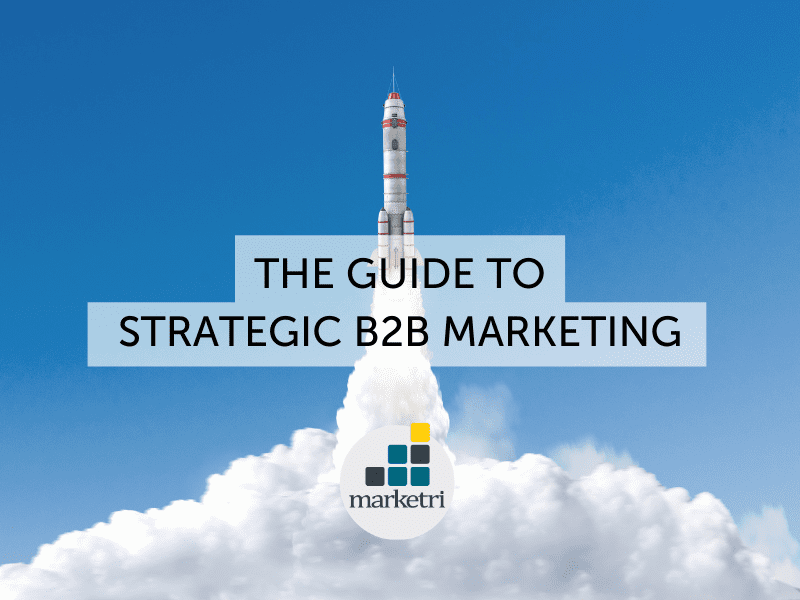Marketing Through Uncertainty: Fractional Teams Provide the Agile Advantage
It’s a volatile time across the business landscape, with many mid-sized companies bracing for a downturn. You’re scrutinizing spending across every function, including marketing.
But if you run a growth-minded business or a PE-backed portfolio company, you’re still trying to hit aggressive targets.
How do you manage your marketing budget in 2025? How do you scale your marketing to drive growth with limited resources? Are there better alternatives to hiring a full marketing team?
We explore the challenges of marketing through uncertainty and explain why the fractional model is the best way forward for businesses that want to outperform the competition.
Uncertainty Goes Through Phases—So Where Are We Now?
A lack of clarity about tariffs, the ebb-and-flow of consumer confidence, stubborn inflation, and stagnant interest rates create a murky picture for business owners. Layer on the unprecedented pace of technological change, and it couldn’t be a more challenging time.
When uncertainty spikes, businesses go through a fairly consistent arc of responses, especially when it comes to marketing.
The first reaction is to freeze spending by halting new marketing hires and pausing planned initiatives. Many organizations are in the midst of this wait-and-see period.
If conditions don’t improve, companies start trimming the fat. And in marketing, the “fat” is any campaign, channel, or project that isn’t achieving a strategic goal, like driving growth or improving brand awareness. (We’d argue that you should never invest in those initiatives, even in good times. Check out our blog on why random acts of marketing never generate results.)
As macroeconomic conditions decline, the cuts become deeper. Many middle market companies reduce marketing headcount just to make the budget work, while still trying to maintain productivity (leaving the remaining staff to juggle an unrealistic workload). They take the unfortunate step of slashing the meat of their marketing just to reduce the budget. And that usually has unforeseen, damaging consequences.
What Happens When Businesses Cut Back on Marketing
Study after study shows that if you don’t keep the pedal to the metal with consistent marketing during tough times, you’ll lose ground to competitors. Some businesses never catch up.
In a study by Analytics Partners, 60 percent of brands that spent more on marketing during the Great Recession were rewarded with higher ROI. And half watched their ROI grow in consecutive years. It’s a stark contrast to brands that cut marketing spend during that volatile time: They risked the loss of 15 percent of business to competitors that took the opposite tack.
McKinsey data on over 1,000 companies shows a similar dichotomy: While many companies struggled with negative total shareholder return (TSR) during the difficult period of 2007-2009, the top quintile demonstrated tremendous resiliency, delivering TSR of over 21 percent. Interestingly, this same group increased their marketing and operating spend by 2.2 percent during this time. The rest of the sector had cut back on marketing spending and only averaged negative 4 percent shareholder return.
We’ve seen it with our own clients, too.
During COVID, Marketri helped several mid-sized companies pivot their marketing to stay ahead of the competition. Our team advised a wellness company on how to keep business humming during pandemic restrictions, with marketing that drove leads and sales for a new virtual wellness offering.
When COVID pushed high-net-worth individuals into financial hibernation, we helped a wealth management firm shift their marketing strategy. Rather than focus on outreach to prospective clients, we recommended they take the time to refine their brand and messaging. Once the COVID-triggered uncertainty subsided, they were ready to restart the lead generation engine and bring in more business than other financial planning firms.

Your Competitors Are Probably Hunkering Down
Middle market companies that view marketing as a cost center usually take aim at this function during difficult times. They batten down the hatches and passively wait for the storm to pass.
We’re already seeing that play out.
In Gartner’s 2025 CMO Spend Survey, six of ten Chief Marketing Officers (CMOs) said they don’t have enough budget to execute on their marketing strategies. And many believe in-year budget cuts could be on the horizon.
Yet even as budgets stall, business owners still expect every dollar of marketing to generate a strong return—and rightfully so! Over 60% of marketing leaders say they’re facing more ROI pressure from CFOs and other C-suite leaders.
That’s actually good news for you.
If your competitors follow the herd and cut marketing with no real strategy, you get the edge. By adopting an agile and cost-effective model, you can gain ground against businesses that fail to view modern marketing as the revenue-generator and growth-driver that it is.
The Benefits of Fractional Marketing During Downturns: Your Competitive Weapon
Fractional marketing IS that agile and cost-effective model. And it’s the best way for middle market companies to keep growing the top line profitably, even in challenging times.
Here’s how fractional marketing works, and why it’s the ideal approach for growth-minded B2B companies during uncertain periods:
A fractional marketing partner gives you access to the precise skillsets and resources you need to drive growth, without the unnecessary overhead of a team of FTEs. You can tap expertise in digital marketing, SEO, content creation, PR, paid search, and much more—roles that middle market companies don’t need full time and can’t afford full time, even when the economy is flourishing.
By diverting your spending away from overhead, the fractional model focuses more of your limited budget on the customized, strategic guidance you need to pivot your marketing effectively during uncertain times. And that’s exactly what it takes to drive predictable revenue growth and hit those ambitious targets.
Hire a Strategist or a Tactician? No Need to Make the Tradeoff
The most effective marketing combines a go-to-market strategy grounded in data and research, with flawless execution of your strategic marketing plan. For middle market companies that attempt to do it all with a solo marketer, that’s always created a quandary: Do you hire a strategist or a tactician?
Few marketers are truly skilled at both. And you can’t afford to staff both internally.
That’s the beauty of fractional marketing: It provides the strategic direction and marketing execution you need to drive revenue growth, through a single source. A Fractional CMO becomes your strategic partner, getting to know your business and competitive landscape deeply and developing a customized strategy and plan to achieve your revenue goals. And the fractional team executes every aspect of that plan, with urgency and precision.
You get the benefit of strategic marketing without full-time hires. Along with effective execution across every channel and campaign.
Fractional Marketing is the Definition of Agile
The fractional model also provides scalable, nimble marketing support for mid-market firms—another critical need in times of unpredictability.
Your fractional team make-up will match your marketing goals, strategy, and needs today. And they’ll be ready to scale up as conditions improve or pivot as buyer behavior evolves. Your Fractional CMO will develop agile marketing strategies, and your fractional execution team will flex in sync with your marketing plan—keeping you resilient and a step ahead of competitors.
For example, if customers pause their spending, you might face a longer sales cycle. A Fractional CMO will develop a strategy to keep you top-of-mind and relevant with ideal buyers throughout a longer buying journey. They might shift more of your marketing to nurturing decision-makers through the revenue funnel. So when they’re ready to buy, you’re on their short list.
Or let’s say you sell a service that can help businesses navigate market uncertainty by improving efficiency and reducing expenses. Your Fractional CMO can shift your messaging and content approach to capitalize on this opportunity, ensuring ideal buyers know you have a solution to their current pain points.
Your Fractional CMO can even assess your in-house marketing talent and recommend strategic pivots to generate more ROI for your overhead spend. You’ll learn how to build a marketing team during uncertainty, with confidence.
Marketri is Your Agile Fractional Partner
For middle market companies that want to turn market uncertainty into a competitive advantage, Marketri is the right strategic partner.
Our fractional services turn your marketing into a growth engine that drives predictable revenue even in challenging times. And our model combines everything you need to achieve a high ROI on your marketing, without the overhead of a full internal team:
- Strategy: Your Fractional CMO develops a customized, data-driven go-to-market strategy and plan.
- Execution: Your fractional team executes your marketing plan flawlessly, using AI-enabled tools that optimize marketing effectiveness and efficiency.
- Analytics: We constantly monitor and measure how your marketing is working, using the key performance indicators (KPIs) that matter most to your business.
- Optimization: We continually refine your marketing to achieve the best possible outcomes, using data to inform our decisions.
Schedule a call to learn how Marketri’s fractional marketing model will empower you to grow and thrive, even in unpredictable times.





